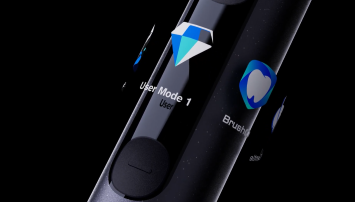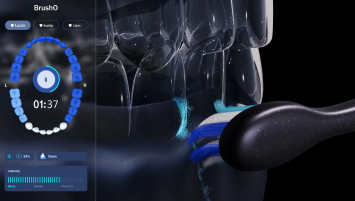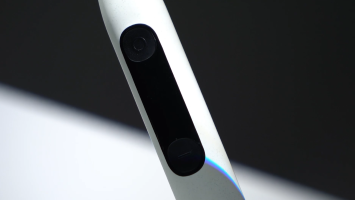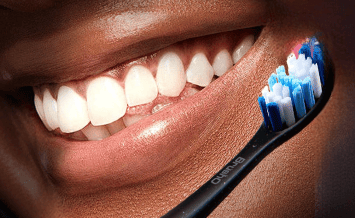Back
Morning vs Night Brushing: Best for Your TeethSep 2
Sep 2
Morning vs night brushing is not just a simple choice—it changes how your mouth fights bacteria, plaque, and acid during the day and overnight. While both times matter, their benefits differ across age groups and lifestyles. In this article, we’ll explore the science of brushing timing, share dentist-backed advice, and explain how smart tools like BrushO make sticking to the habit easier.

Why Brushing in the Morning Matters ☀️
Clears overnight buildup: Saliva drops when you sleep, bacteria multiply, and morning brushing removes this biofilm.
Fresh breath boost: Eliminates morning odor from bacterial sulfur compounds.
Pre-meal protection: Brushing before breakfast leaves a fluoride layer that shields teeth from acids in coffee, juice, or fruit.
Mental cue: Acts as a “wake-up signal,” anchoring your day in hygiene.
Why Brushing at Night Matters 🌙
Stops bacteria feasts: Food particles left behind are fuel for cavity-causing bacteria overnight.
Reduces gum problems: Night brushing lowers inflammation risks tied to gingivitis and periodontitis.
Protects enamel long-term: Leaving plaque on teeth overnight accelerates enamel wear and tartar buildup.
Pairs with flossing: Evening is the best time to floss, making brushing more effective.
Different People, Different Priorities
Kids 👧🧒
- Often forget brushing before bed—yet this is most important for preventing cavities in baby teeth.
- Parents should supervise brushing at night, even if kids brushed in the morning.
Working Adults 🏙️
- Coffee drinkers: Brushing before coffee prevents acid + stain penetration.
- Smokers or frequent snackers: Night brushing is non-negotiable to remove tar and sugars.
People with Braces 😬
- Night brushing is critical to clean around brackets and wires.
- A deep-clean mode on smart brushes helps cover hard-to-reach areas.
Seniors 👵👴
- Gum recession makes roots more exposed—so both morning (for freshness) and night (for decay prevention) are essential.
- Sensitive mode is often better tolerated.
Morning vs Night: A Quick Comparison
Aspect Morning Brushing ☀️ Night Brushing 🌙
Fresh breath Yes – reduces morning odor No major effect (already fresher at night)
Plaque removal Clears overnight bacteria Clears food particles & daily buildup
Enamel protection Fluoride shield before breakfast Stops acid attack during long sleep hours
Dentist priority Useful for freshness and protection Critical to prevent decay and disease
📌 If you must choose just one, dentists say night brushing is more important. But brushing twice a day remains the gold standard.
How BrushO Helps Build Habits 💡
Consistency is the challenge—not knowledge. The BrushO Smart Electric Toothbrush solves this with:
- AI-powered reminders: Nudges you to brush morning and night.
- brushing modes: Choose gentle in the morning, deep clean at night.
- Long battery life (45 days): Perfect for travel and busy routines.
- Brushing reports: Track streaks to keep motivation high.
With BrushO, brushing at both times becomes easy and sustainable.
FAQ: Morning vs Night Brushing
Q1: Should I brush before or after breakfast?
Dentists recommend before breakfast. If after, wait 30 minutes to protect enamel.
Q2: Is brushing once a day enough?
Not ideal. If only once, brushing at night is far more important.
Q3: Can I brush three times a day?
Yes, but don’t overbrush—gentle technique and a pressure sensor toothbrush prevent gum damage.
Morning vs night brushing—which matters more?
Morning brushing fights odor and preps teeth for the day, while night brushing protects against plaque and decay during long sleep hours. If you must choose, night brushing wins. But with smart tools like BrushO, maintaining both is effortless—and your teeth will thank you for it.
👉 Build better habits today with BrushO
👉 Learn more: Why Smart Toothbrushes Are the New Lifestyle Trend
Recent Posts

Better Sleep Starts with Better Brushing
Brushing your teeth properly before bed doesn’t just improve oral health—it may actually help you fall asleep faster and sleep deeper.

How Smart Toothbrush Apps Are Revolutionizing Oral Care
Smart toothbrush apps like BrushO are redefining dental care by blending AI technology with personalized feedback, helping users improve their brushing habits and oral health.

The Right Pressure to Brush Your Teeth
Brushing too hard can cause gum damage and enamel loss—BrushO helps you find the right pressure with smart, real-time feedback.

Why BrushO Is Revolutionizing Oral Care
Brushing twice a day is a habit most of us follow—but are we doing it right? BrushO combines AI, powerful performance, and personalized feedback to upgrade your brushing routine, one smart session at a time.

Why BrushO Is Changing the Way We Care for Our Teeth
BrushO is not just another electric toothbrush—it’s a smart, AI-powered dental companion that transforms daily brushing into a data-driven habit.

Personalizing Your Oral Routine with BrushO
Discover how to tailor your brushing experience using BrushO’s smart modes, app features, and real-time reports. This post explores how BrushO transforms your daily routine into a personalized, data-driven oral care system that adapts to your needs.

Build Brushing Habits with BrushO’s Rewards
Turn daily brushing into a rewarding habit with BrushO’s smart point system.

The Science Behind BrushO — How AI Improves Your Oral Health
Discover how BrushO’s AI-powered technology transforms your daily brushing routine with smart feedback, pressure control, and a personalized oral care experience.

How to Build a 2-Minute Brushing Routine That Works
Struggling to make your brushing routine both short and effective? Discover how to master the ideal 2-minute habit with smart tips and tools—starting with the right toothbrush.

How to Spot Plaque Before It Becomes a Problem
Plaque is invisible—but its damage is real. Learn how to spot and stop plaque buildup before it leads to tooth decay and gum disease.
